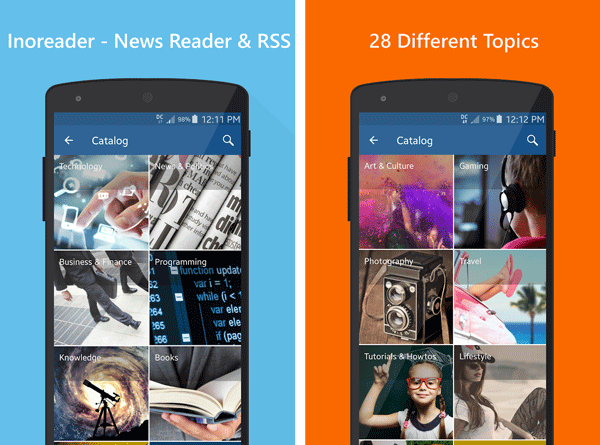
Next we configure the request by setting any Server credentials (the ServerCredential property), proxy credentials (the Prox圜redential property), and HTTP headers (the SetRequestHeader method) needed. WinJS.log & WinJS.log("Error: Invalid URI") Use your own uriString for the feed you are connecting to. The URI is validated by catching exceptions thrown by the Uri constructor. So we validate the uriString using a try/catch block. The Uri constructor throws an exception if the uriString passed to the constructor is not a valid URI. Before we can configure and send the request, we'll define a few variables we'll be using during the operation, and initialize an instance of SyndicationClient, which defines the methods and properties we'll use to retrieve and display the feed.
FEED READER FOR WINDOWS 8 HOW TO
Now we will review some code that demonstrates how to retrieve a feed, and then display each individual item that the feed contains. Retrieving syndicated content from a web feed For more information, see the "Capabilities" section in the Networking basics topic. If your app needs to connect as a client to remote services on the Internet, then the internetClient capability is needed. To ensure your UWP app is network ready, you must set any network capabilities that are needed in the project Package.appxmanifest file. This section shows how to retrieve and display a web feed using classes in the namespace in your UWP app written in C# or JavaScript. Network capabilities may also be set manually in the app manifest file using a text editor.įor more detailed information on network isolation and networking capabilities, see the "Capabilities" section in the Networking basics topic. Network capabilities are usually added using Microsoft Visual Studio 2015 when developing the app. The network capabilities for an app are configured in the app manifest when the app is built. A call to a class element in the or namespace that results in network access may fail because of network isolation if the appropriate network capability has not been enabled.
FEED READER FOR WINDOWS 8 WINDOWS
Windows actively enforces network isolation.

Network isolation affects any class elements in the and namespaces that try to access the network.


This significantly reduces the scope of the impact on other applications and on Windows. The ability to set and enforce network isolation ensures that if an app does get compromised, it can only access networks where the app has explicitly been granted access. An app without the appropriate scope defined is prevented from accessing the specified type of network, and specific type of network request (outbound client-initiated requests or both inbound unsolicited requests and outbound client-initiated requests). Network isolation allows a developer to define for each app the scope of required network access. However for those apps that do, UWP provides different levels of access to the network that can be enabled by selecting appropriate capabilities. Not all apps may require access to the network. The network isolation feature in the UWP enables a developer to control and limit network access by a UWP app. Using syndicated content with network isolation Note that, for publication of syndicated content, the UWP implementation of the Atom Publication Protocol ( ) only supports feed content operations according to the Atom and Atom Publication standards. Using SyndicationNode with classes in the namespace, allows apps to access attributes, extensions, and any content that they may contain.

To support this added feature, the SyndicationNode class represents generic XML elements. Over time, these custom elements and attributes have become a way to define domain-specific information consumed by other web service data formats like GData and OData. Classes in the namespace can define feeds and feed items capable of representing both RSS and Atom elements.Īdditionally, Atom 1.0 and RSS 2.0 formats both allow their feed documents to contain elements or attributes not defined in the official specifications. The Universal Windows Platform (UWP) supports feed retrieval for RSS format standards from 0.91 to RSS 2.0, and Atom standards from 0.3 to 1.0. Which feed format standards are supported? Content consumers can use a feed reader app to aggregate and monitor feeds from any number of individual content authors, gaining access to the latest content quickly and conveniently. Updates made to a feed are in the form of new entries used to promote the latest content across the Web. What is a feed?Ī web feed is a document that contains any number of individual entries made up of text, links, and images. Retrieve or create the most current and popular Web content using syndicated feeds generated according to the RSS and Atom standards using features in the namespace.


 0 kommentar(er)
0 kommentar(er)
